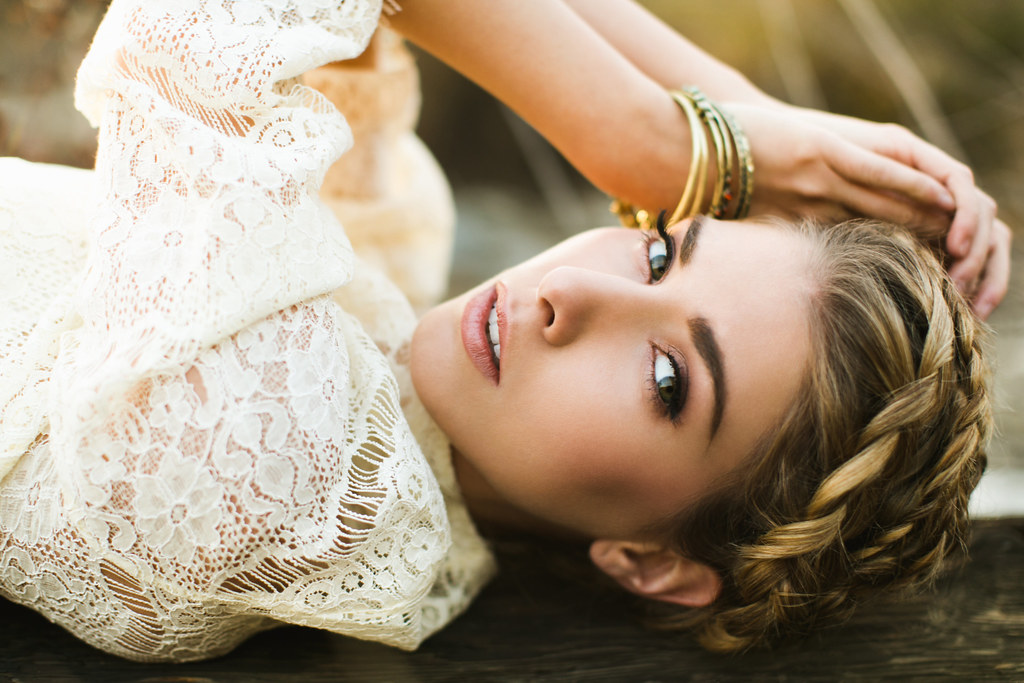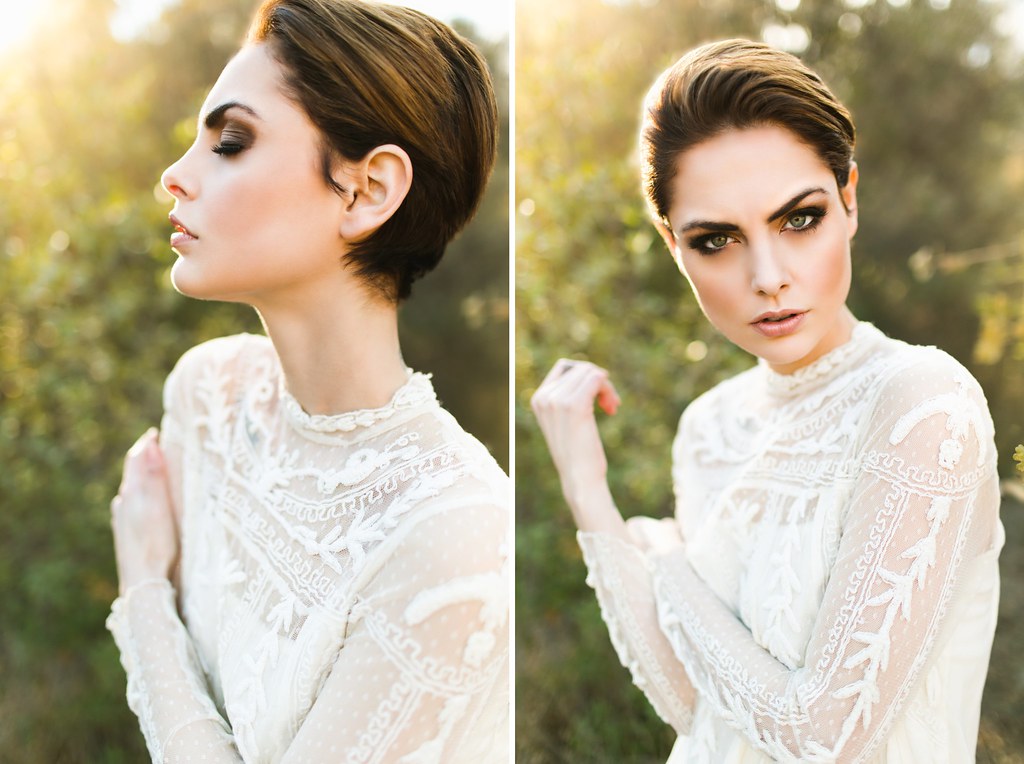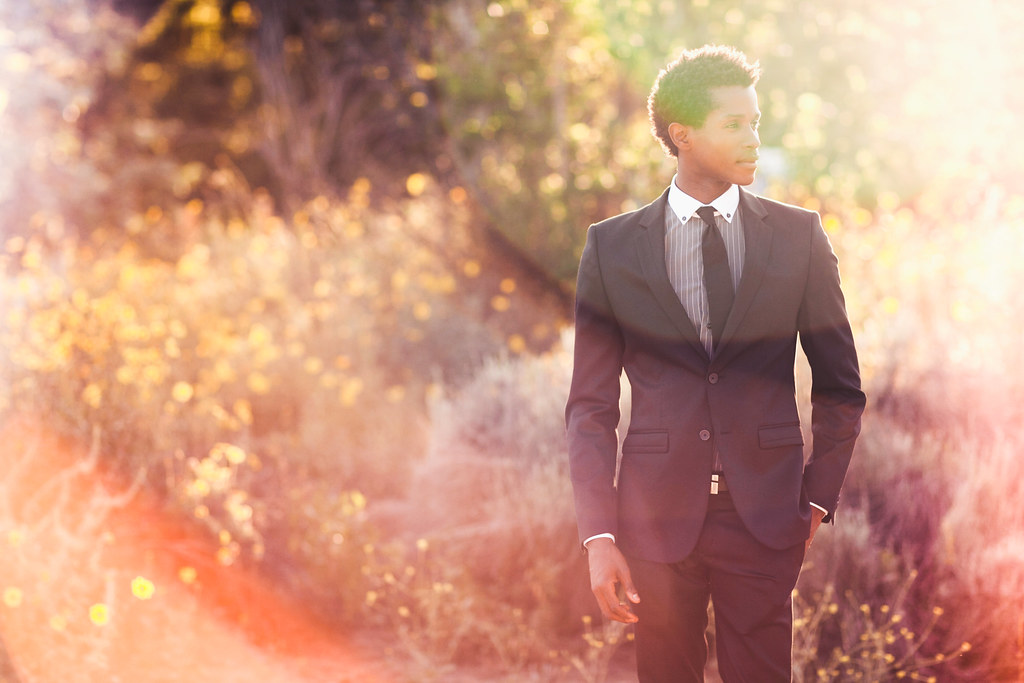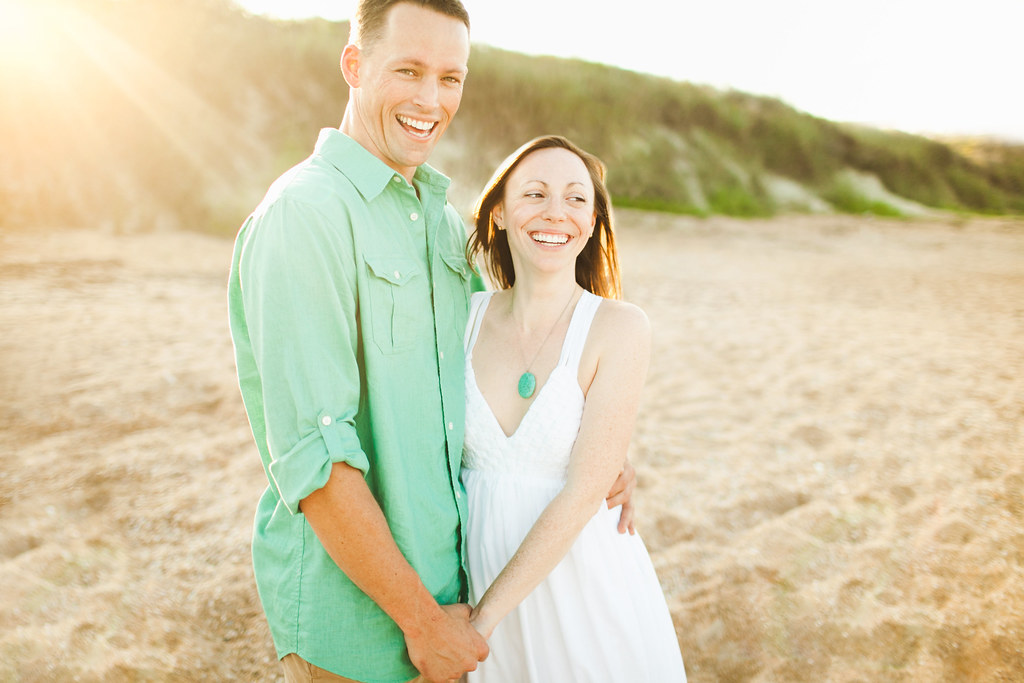Back Lighting
Lighting is key. It has an influence on just about everything we do when making an image. Light will affect what time of day we shoot, where we place our subject, our shutter speed, our aperture, how we edit the images, blah blah blah. You get the idea, right? Understanding and controlling light is crucial to the success of your work. Without understanding it, you are doing nothing more than guessing and hoping for the best. This means you aren’t able to create certain looks on the spot and you aren’t able to replicate looks that you’ve shot and loved in the past. Experts aren’t experts because they guess, they are experts because they understand the ins and outs of what they do. Just for the record, I’m not writing this because I consider myself an expert but education happens when we share ideas, so here I am sharing my ideas in the hopes that it some of you will benefit from it and will be able to pass that on to someone else.
If you follow my work at all, it should be pretty clear by now that I am a huge fan of back light. In fact, sometimes if the light just right, this happens on set. I’m not here to say that any particular lighting scenario is better than another as they each are great for certain looks, but back lighting has always been a favorite of mine. In the beginning I found myself drawn to it for the imperfections and the happy accidents caused by the sun hitting the lens and over time I have grown to appreciate it for its ability to be specifically manipulated. I used to think that back lighting was all about sun flares but there is so much more to it. Depending on the lenses used, the time of day, and the personality of the subject, back lighting can give you anything from a flare-filled dynamic lifestyle shot to a hazy and peaceful editorial portrait.
TYPES OF BACK LIGHTING
Just like any other lighting scenario, back lighting has it’s quirks and can give you completely different looks depending on how you control it. Below are a few of the different looks that tend utilize the most.
SOFT LIGHT
Shooting back lit in soft light tends to deliver a calmer, more intimate image. If you are just looking for that simple soft light, wait until the sun is just below the horizon or hidden by something else (trees, mountains, buildings, etc.) and shoot with your subject completely in the shade. That will give you a soft luminous light that envelops your subject.
 5D III + 50L
5D III + 50L
In this image of Brianna I wanted to bring out a soft golden glow so I shot her when the sun was just barely peaking over the mountains behind her. When the sun is just about to pass below the horizon you are left with a soft wash of light that can bring out a more peaceful tone in your images than you might see if the sun is higher in the sky and putting direct light onto the back of your subject. More from this shoot here!
HAZE
Haze is one of the more versatile looks you can use with back lighting as you can manipulate it to bring out a soft summer glow in a lifestyle image, or you can make it a bit stronger for a completely different look that might fit a harder editorial. If you are looking for a soft hazy glow to come across your image, shoot when the sun is still in the sky (not hidden by mountains or under the horizon), and have the sun hidden just outside of the frame. This will allow some of the stray light to sneak into the side of your frame leaving a soft wash of light and color across your frame. If you are looking for a harsher haze with more flares and light artifacts, allow the sun to shine directly into your lens (longer lenses work best for this) and you will find a haze that has a bit more substance to it.
 5D III + 35L
5D III + 35L
When I set up this shoot I wanted to play with the balance between the softness of the lace and the harder look of the model. Using a hazy back light with the sun just outside of the frame allowed me to mimic that sentiment by having the a softer haze come across the image while still having the sun place a hard rim light on her to define her silhouette.
 5D II + 85L II
5D II + 85L II
Holy lens flare! Longer lenses and direct light coming into the lens tends to create a much more dramatic haze that takes over the image. When the sunlight bounces around on the glass in your lens it also creates the random light and color washes you see here. Shooting like this will take a bit of practice to tune it how you like but once you get it, it is a blast to play with.
RAYS
Having streaks of light coming into your frame is a great way to add dynamic energy into your image. To create rays in your frame, your best bet is to shoot with a wider lens which will stretch the light a bit and leave it streaking across the frame. Instead of hiding the sun just outside of the frame or behind something in the frame, allow it to peek in. Whether it is peeking out from behind something in the image, or peeking in from the outside of the frame, make sure that there is a little sliver of direct sunlight hitting your lens. This little sliver is what will create your rays. Also, the more you stop down your aperture, the more defined your rays will become.
 5D II + 35L
5D II + 35L
To create a bit of energy and movement into the frame (which matches and emphasizes the mood from my couple), I shoot with the sun just peaking over the lens hood into the frame. That introduced the streaks of light you can see coming in from the top left corner of the image.
TIPS AND TRICKS
Something you will learn pretty quickly is that every lens handles the sun differently. Longer focal lengths will handle it differently than wider ones and even two different lenses of the same focal length will give you two different results. This is because the sun flare is a result of the sun shining into the lens and bouncing around the glass inside. Since the glass is different from lens to lens (both in shape,and quality), you will always end up with a unique result. Longer lenses will give you larger washed out artifacts while wider lenses will give you smaller and more dynamic flare. The distance the subject is from your lens and the aperture that the image was shot at will also effect the final image. The reason I am telling you this is so you experiment. Shoot with all of your lenses and change up your settings to see what you prefer. I could go into a lengthy explanation of the differences I’ve found but the best way to learn them is to shoot them for yourself. Don’t be afraid to experiment a bit!
One of the more common mistakes that photographers make when starting to shoot into the sun is that they will expose for the sky instead of exposing for their subject. This leaves the subject drastically underexposed and much less of a focal point. The reason that this is such an easy mistake to make is because most of us were taught not to overexpose because you will lose detail in that area of the image. While that is true, The detail that I want to preserve is in my subject, not the sky. I overexpose the sky almost every time that I shoot back lit because the sky isn’t my main concern (sorry, sky). What I typically aim for is the limit right before I overexpose my subject. Make sure you read that correctly, I aim for the limit right BEFORE I overexpose. Even if you are shooting RAW, if you accidentally overexpose, you will not be able to get back blown out details in post because the image data is simply not there. A good way to find that limit is to turn on the highlight alert on your camera. Every camera has a different way to turn it on which can be found online (thank you Google) or in your camera’s manual without much trouble. The highlight alert will tell you where you have lost the details due to overexposure in your image. Every pixel on your image that has lost detail will flash on your LCD screen. If you see flashing pixels on your subject, dial down the exposure to the point right before it starts to flash. This way if you choose to push it father in post, you still can but the details will remain in your image either way.
Another difficulty you may come across when shooting into the sun is acquiring focus. With the sun beating through your lens and into the sensor the camera will have a hard time finding the point of focus. An easy way to battle this is to focus and recompose. I almost always have my center focus point selected and focus on my subject and then recompose the shot to how I want it before firing the shutter. To battle your misfocusing camera, you just need to hide sun, focus, bring the sun back, and fire. It is a pretty simple process that will save you a lot of frustration from waiting for you camera to focus. Hide the sun, focus and then recompose. Bam! Problem solved.
EDITING
 5D III + 50L
5D III + 50L
Shooting back lit can leave you with images that are a lot more washed out than you might be used to but no need to worry, you can always bring the richness back!
The last thing that I wanted to touch on is editing for back lighting because it can actually be quite a bit different than other lighting situations. In fact, one of the patterns I’ve noticed during my workshops is that most of the photographers I mentor think they are shooting their back lit images incorrectly because they come out so washed out. At least half of the photographers who brought it up said that they typically just throw them out because they can never get the “pop” back into them. Since I LOVE back lighting, I wanted to put this out into the world: Don’t get discouraged! Shooting back lit will give you very flat images straight out of the camera. It’s okay. No need to panic. When you edit these, bring up the contrast. If you need more, bring up the blacks slider, or bring down the shadows or mid tones in your tone curve. Obviously the amount of contrast that you need to bring back will vary from image to image depending on how much light was coming into your lens (which is what washes out your image), but you can expect to add a decent amount back in to anything you shoot back lit. The good news, it’s an easy fix! If you want to learn more about my editing for back lighting (and everything else), you can dig in here.
 5D II + 85L
5D II + 85L
The sun here was hidden just barely by the mountain behind her which left a bit of soft light coming from behind her to make her pop from the darker background. To emphasize the haziness in the image I shot through a few leaves which I held up right against the side of my lens. Since I shoot with a shallower DOF, those leaves left a soft blur coming across the image. Straight out of the camera I was left with a pretty flat image so I had to bring up the contrast and down the blacks in post to bring back the richness that I wanted.
I feel like anytime I am teach, I wrap it up by telling people to experiment. Well here I go again, the best way to learn the ins and outs of back lighting (and anything else) is to experiment with it. Shoot with different lenses, put the sun in different spots in and out of the frame, shoot at different times of day, etc. The more you experiment, the more you will learn what works, what doesn’t, and why. Happy experimenting!
If you felt like you learned something, feel free to pass it along. Education starts when we share ideas. Long live back lighting!
This is just a small section from my Free Lighting Class!
[…] SHOOT TIPS: Back LightingBen Sasso […]
ooookay, I love backlighting too! I have dealt with overexposure, and am just now learning to love, experiment, and capture fun sun flares- light is magic and the source of my photography inspiration. great article. 🙂 thank you!
Awesome tips here, ben. Thanks for sharing and keep taking awesome photos.
Thank you so much Ben! I have a question…when you say that to help with focusing you just ‘hide the sun and then recompose the image’…how do you ‘hide the sun’? looking forward to your thoughts! 🙂 Tara
You are welcome Tara! To hide the sun, just put it anywhere that isn’t shining into the lens. That means just out of the frame, behind someone’s head, etc. Hope that helps!
The Ace ventura gif had my husband and I rolling. Thanks for explaining so in depth, and in ways we totally understood. you’re so great!
Ben, You are the man! Thank you for taking the time to continually educate those around you. This stuff right here is the real deal! Thank you for making the photo industry a better place.
Wonderful! Would love to see more before/after images to get an insight into how you edit. Thanks Ben!
BEN, THESE ARE ABSOLUTELY STUNNING. WELL DONE!!
Ben – thank you so much for breaking this down! I love backlighting but thus far other than 100% backlight/blown outlook it’s been mostly trial and error. Do you ever use REFLECTORS to help front light and/or ensure a catch light?
Tricia, It is pretty rare that I use reflectors because I like my backgrounds to be pretty bright and if I was reflecting more light into my subject, I would have to stop down more which would make my background a bit darker.
This is a very thorough tutorial on backlit images that covers all of the problems that can occur when attempting to photograph with this kind of light. I like how you address some of the solutions to these problems, too.
This has really helped with so much its crazy that such little simple tips can CHANGE your whole Work! Keep doing what you do because your a huge blessing man!
I can’t tell you how much I appreciate these posts of yours. Your tips are phenomenal, and I’m always looking for advice from those more experienced than I. I find most photographers are afraid to share so much knowledge, so I’m so grateful to you for sharing your wisdom! Great shots, as always.
thanks for a great post!! 🙂
thanks for taking the time to write this ben!
Great article ! Very helpful, thanks !
Hi Ben, great tips! thank you! One question: do you use reflectors to bounce light back in your subjects face? or do you use a diffuser to diffuse the light from the back?
Thanks, Paolo
Thanks Paolo! I actually answered the question about reflectors a little higher up in the comments but to answer your questions about diffusers, sometimes. If I want a softer look, I will usually wait until the sun drops a bit more but if I am on a time crunch for whatever reason, a diffuser can do the trick too!
Awesome tips! You are so right about varying lenses handling sunlight differently. Thank you for sharing.
Ben, you’re amazing! thank you so much for this article.
Thank you!
Thank you so much for this! great insight!
Amazing tips and i adore your writing style! So glad to have come across you and look forward to learning from you.-hugs from Conroe, TX
Hi Ben! I love your work. You mentioned using a lens hood in this post and I wanted to ask you about that. I have a 24-70mm 2.8 L and i don’t use the lens hood because i thought that would give me more lens flare. should i actually be using the hood? thanks for your time!
Genevieve, I almost always use lens hoods but it really just depends on the look you are going for. Lens hoods help cut down on flare/haze so it is up to you to decide if you want that or not!
Thanks so mucH for this article, amazing woRk 🙂
Ben i love you for posting things like this! I’ve been following you for a while and your work is incredible, yes, but what makes you so great is that instead of hiding your secrets you actually want to help other photographers reach our fullest potential too and that is awesome. The world needs more professionals like you. I especially appreciate the before and after images you included in this post, it’s inspiring to be told that it is OKAY if things don’t look perfect out of the camera and to see how much life you can bring to an image by understanding and utilizing the software. Keep doing what you do, you’re pretty great at it.
first off, i caught your class on CL TODAY! GOOD STUFF!!! MY QUESTION IS VERY SPECIFIC TO YOUR EDITING. I ABSOLUTELY LOVE THE WAY THE SKIN LOOKS ON YOUR MODEL WITH SHORT HAIR IN THIS POST. ARE YOU MAKING THIS HAPPEN THROUGH LR? OR PS? I OWN BOTH, BUT I PREFER NOT TO VENTURE OUT OF LR. AND IF YOU ARE USING LR FOR HER SKIN, HOW? IF YOU DON’T MIND ME ASKING.
Glad that you enjoyed the class Dennis!
I wish I could answer that quickly, but I do offer self paced classes that cover my entire editing process including retouching. I do all of mine in LR so that is what I teach. You can find that under the Education section of my website.
This is exactly what I needed to read! I have been struggling with capturing good back lighting, and your suggestion to stop down to just below over exposing your subject is just golden. Thank you!
You are awesome. awesome. Thank you for sharing!! I love backlighting, but I struggle with it so frequently. This is so helpful!!
So amazing! Do you use flash when you take photos of the bride getting ready or is it all natural light?
Thank you, Amber! I use all natural light unless I absolutely have to use a flash during receptions.
thanks for sharing ben. I love a bit of back light but i can be scared of using it under pressure as it can be a bit hit and miss. Looking forward to using this on a shoot at the weekend now. 🙂
freaking good article. I used to try to not blow out the skies, but I’ll give it a try.
Have just come aCross your blog and have alReady learnt sOme great tIps i haven’t found eLsewhere, thank you.
Hey ben. Thanks for this awesome post. you mentioned learning more about the tone curve in the article and i wondered if there were any resources for this that you’d RECOMMEND? I’m sure there are tons online buti was hoping to try one that comes recommended…
Hey Stephanie! I don’t know of any specific ones but I’m sure anything on the first page of google would explain it well!
Just came across this post and wanted to say thank you for sharing! It was a good reminder about the back lit photos and the editing…I love the back lit as well and sometimes would get discouraged by that, but knowing how to edit it…and always, the encouragement to get out and experiment! — Thank you!
Thank you Ben! Quick question, which may be obvious, when you say bring up the contrast or up the blacks, which direction are you talking (to the right?)?
Thanks!
Marissa, You’re welcome! And yes, to the right.
Thank you for the tips i am still learnig about lighting i’ll try these tips and maybe i’ll get the cocept of lighting right
I love your tips, but as someone who’s been taught to underexpose to retain the sky, i still don’t understand why you would overexpose it. Can’t you just bring up the shadows in PP? what’s the benefit of almost over exposing the subject?
I friend recently introduced me to your presets, but I have to admit that not only are they amazing, but I have come to appreciate more your OPENNESS in teaching and sharing the “how abouts” to aquire certain look or style. I am now officially a fan! thank you!!!!